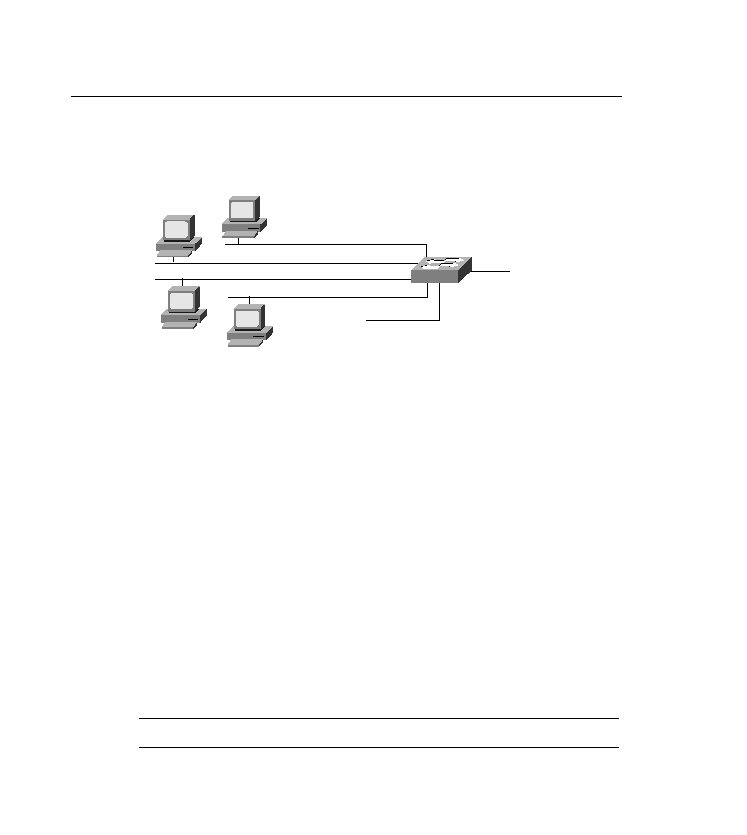
For best performance, network designers often assign just one host to a port, giving that host a
dedicated bandwidth allocation of 10 or 100 Mbps. When a LAN switch starts up and as the
devices that are connected to it request services from other devices, the switch builds a table
that associates the MAC address of each local device with the port number through which
that device can be reached. Because they work like traditional bridges, a network built and
designed with only LAN switches appears as a flat network topology consisting of a single
broadcast domain.
segments, reducing the number of users contending for bandwidth. Each switch port provides
a dedicated 10/100 Mbps Ethernet segment or a dedicated 4/16 Mbps Token Ring segment.
Switches deliver dedicated bandwidth to users through high-density group switched
10/100BaseT Ethernet, flexible 10/100BaseT Ethernet, fiber-based Fast Ethernet, Token Ring,
and CDDI/FDDI.
interconnect segments. Switches have the intelligence to monitor traffic and compile address
tables, which then allows them to forward packets directly to specific ports in the LAN.
Switches also provide nonblocking service, which allows multiple conversations (traffic
between two ports) to occur simultaneously.